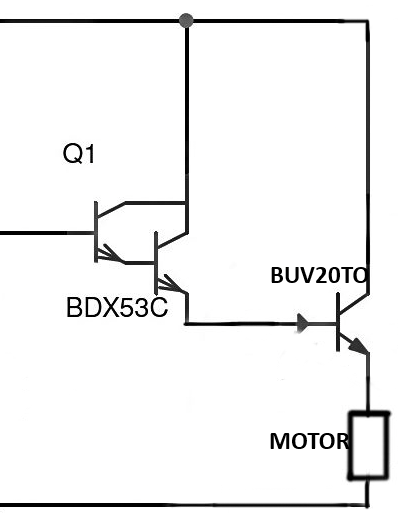I need some advice about how to provide a DC voltage (between 0 and 24V, tunable) with high current (about 8A) to a motor.
All the times I have done this, I have used a BJT Darlington pair like this one, with BDX53C and BUV20:
At left we have a tunable biasing network which provides a voltage between 0 and a bit more than 24V (to get exactly 24V at the emitter of the BUV20.)
My problem with this type of configuration is heat of BUV20: it becomes too hot and it is difficult for me to keep it cool although I use a 100x100 mm heatsink and an 80mm fan (with also thermal paste.)
What I need is another final stage which generates less heat. I was thinking of replacing my Darlington pair maybe with a power MOSFET, but I do not know how to choose it regarding its "thermal behaviour." In other words, I do not know how to quantify (with datasheet parameters) how much a certain transistor generates heat at a certain biasing condition.
Which configuration and which transistors do you think may be good for my purpose?


